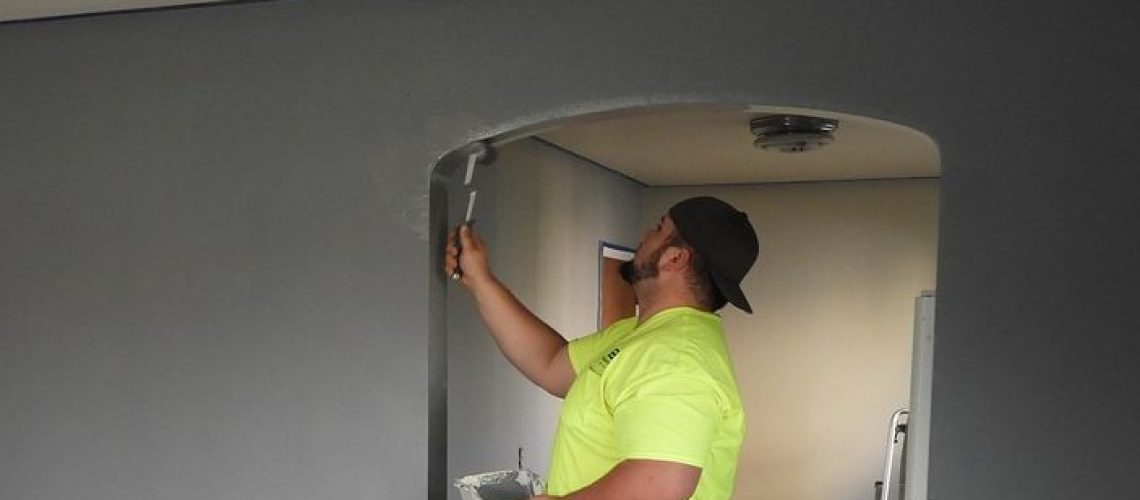Painting a room may appear to be a daunting task, especially if it is your first time to embark on this project. However, with the right materials and adequate information, you can accomplish this task and come up with a decent paint job. Below is a guide on how to paint a room for beginners like you.
Materials
Prior to starting the project, ensure that you have all the materials you need such as: filler for cracks and holes, sandpaper, scraping tool, sponge, detergent soap, drop cloth, old bed sheet, painter tape, ladder (to reach high areas), an angled brush, paint bucket, paint roller tray, paint roller, primer and paint. Usually, a gallon of paint is enough to cover 400 square feet.
Preparation
Before actually painting the room, preparatory tasks must be done first. This is an essential step in the process. Sloppy prep work often leads to a subpar paint job.
Start off by clearing the room – remove furniture and other accessories. Ideally, the room should be bare. Should you be unable to remove some furnishings, cover them with plastic or old bed sheets to shield them from paint splatter.
Do the same for the floor. Cover it with drop cloth, preferably the non-slip type like canvas. Also, make sure you tape the drop cloth to prevent them from moving while you paint.
Strip off old wall papers and scrape off peeling or cracked paint. Next, fill cracks or holes on the wall. Then, sand the wall and other areas to be painted on, especially glossy and/or “unsmooth” spots. Sanding areas with oil-based paint is also necessary if you are planning to use latex paint over them. This is going to make the fresh paint adhere to the surface better.
After sanding, vacuum the wall to remove any dust. Meanwhile, remove grease and/or surface dirt using a sponge dipped in a mixture of water and detergent. Wash the wall thoroughly; no soap residue should be left. Wipe the walls with cloth and let them dry completely.
The next step is to apply primer. Primer is necessary, especially on bare dry walls or areas with repairs done, high-gloss finish or stains, to improve the adhesion of your paint on the wall and achieve a durable paint job.
Painting Your Walls
Pour your paint in a bucket or a work pot and stir it to ensure the consistency of the paint colour.
When painting a room, the rule of thumb is to paint from top to bottom – ceiling, walls and trims. It is also recommended to start with the edges or corners first.
To paint the corners or edges, dip a third of the small angled brush (just half an inch of it) into the paint bucket. Remove excess paint by patting or tapping your brush on the side of the bucket. Then, start painting the edges with smooth strokes.
Once you’re done with the ceiling’s edges, paint the rest of the area using a roller. Make sure you do not soak the roller in paint. Always remove excess paint on the roller, too.
Start painting at the middle. With your roller, create a W or an X pattern; then, without lifting your roller, fill in the gaps. This technique is said to minimise lap marks. Repeat the process until you’ve painted the entire area. Allow the paint to dry for two to three hours before applying the second coat.
It is important to note that, with the large area that needs to be painted and the long drying time, painting a room can take several days to finish, especially if you’re doing it alone. If you want to finish the project quicker, ask someone to help you or better yet, enlist the services of professional painters.
Next, work on your walls. First, put painter’s tape on corners or edges as well as your trims, window and door frames and other areas where you wouldn’t want your paint to be in. As mentioned earlier, paint the corners first with a brush. Then, work on the rest of the area using a roller – paint from top to bottom. Do not roll too fast to reduce paint splatter.
When you are done with all your walls, proceed to painting the trims using an angled brush. Apply the same techniques you used when painting edges or corners. Make sure you remove the painter’s tape right after painting the trims. Removing it when the paint has dried may result in the peeling or flaking of the paint.
For more tips on how to paint a room for beginners, visit our website or call us now at 086 608 1817 / 085 139 0233.
